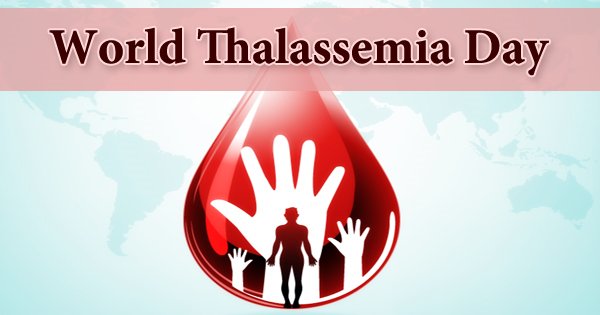Every year on May 8, World Thalassemia Day is observed to raise awareness about this disease among the general public around the world. Every year on this special day, TIF (Thalassemia International Federation) focuses on a different theme that affects patient quality of life by interfering with the quality and adequate treatment of patients. The World Health Organization launched World Thalassemia Day on the 8th of May to raise public awareness about this disease, as well as prevention and transmission prevention measures. Simply put, thalassemia is an inherited blood disorder in which the body does not produce enough hemoglobin, a blood protein. It is a red blood cell protein that aids in the transport of oxygen to various parts of the body. Anemia is caused by the disorder, which causes a large number of red blood cells to be killed. Dark urine, fatigue, bone deformities, and slow development are some of the most common signs and symptoms of thalassemia. Patients with thalassemia, particularly those with beta-thalassemia major, require regular blood transfusions. Blood transfusion (more specifically, component transfusion) is a life-saving procedure that can be used once or on a regular basis to treat a variety of clinical conditions. The signs and symptoms of thalassemia differ according to the type and severity of the condition.
Since 1996, the Thalassemia International Federation (TIF) has had an official relationship with the WHO (World Health Organization) and other major health-related organizations. It is a non-profit and non-governmental organization with 108 member associations in 55 countries. TIF helps thalassemic patients and those with other inherited congenital hemoglobin disorders improve their quality of life, health, and life expectancy. It is involved in a variety of activities, including:
- It assists other health-related institutions in raising health awareness around the world.
- It helps in establishing some new health organizations for better health care of the patients.
- It encourages and promotes all national health agencies to implement effective and efficient national health control strategies, prevention measures, and clinical disease management.
- To increase awareness, it organizes educational campaigns for patients and their families, parents, health practitioners, and other medical professionals.
- It hosts conferences, seminars, workshops, and educational materials, and book distribution campaigns at the local, regional, national, and international levels in order to keep individuals, web visitors, and members informed.
- It also helps in promoting the national health control programs in the European countries.
- Collect and promote updated and accurate epidemiological data for diseases.
- Create European Reference Centers and networks of collaboration between medical practitioners and patient groups.
There are two types of thalassemia: alpha-thalassemia and beta-thalassemia, and the symptoms vary depending on the type and subtype. There are two chains in hemoglobin: alpha and beta. As a result, alpha-thalassemia is caused by an abnormality in the alpha chain of hemoglobin, whereas beta-thalassemia is caused by alterations in the beta chain. Patients with thalassemia should get universal immunization to prevent infection. Because patients receive regular blood transfusions, it is recommended that they eat foods that are low in iron. Maintaining a healthy diet and exercising regularly will aid in the management of the disease. Meanwhile, the Ministry of Health urged citizens to remember patients living with this inherited blood disorder on Thalassemia Day and express gratitude to physicians, researchers, and healthcare workers who are working to improve the quality of life for people with thalassemia around the world. To make World Thalassemia Day more successful, various activities and events are organized in public places, schools, colleges, and other educational institutions. Patients and their families are urged to actively participate in the celebration in order to learn everything there is to know about thalassemia. To inspire more people with thalassemia, the World Health Organization and other health organizations have focused on the patient’s fundamental rights. Various activities, such as health-related debates and discussions about the quality of life of thalassemia patients, including health-care services. People are also made aware of the epidemic through the use of posters and banners. Every year, a different theme is used to make this special day more successful and to encourage patients to seek adequate treatment to improve their quality of life.
















